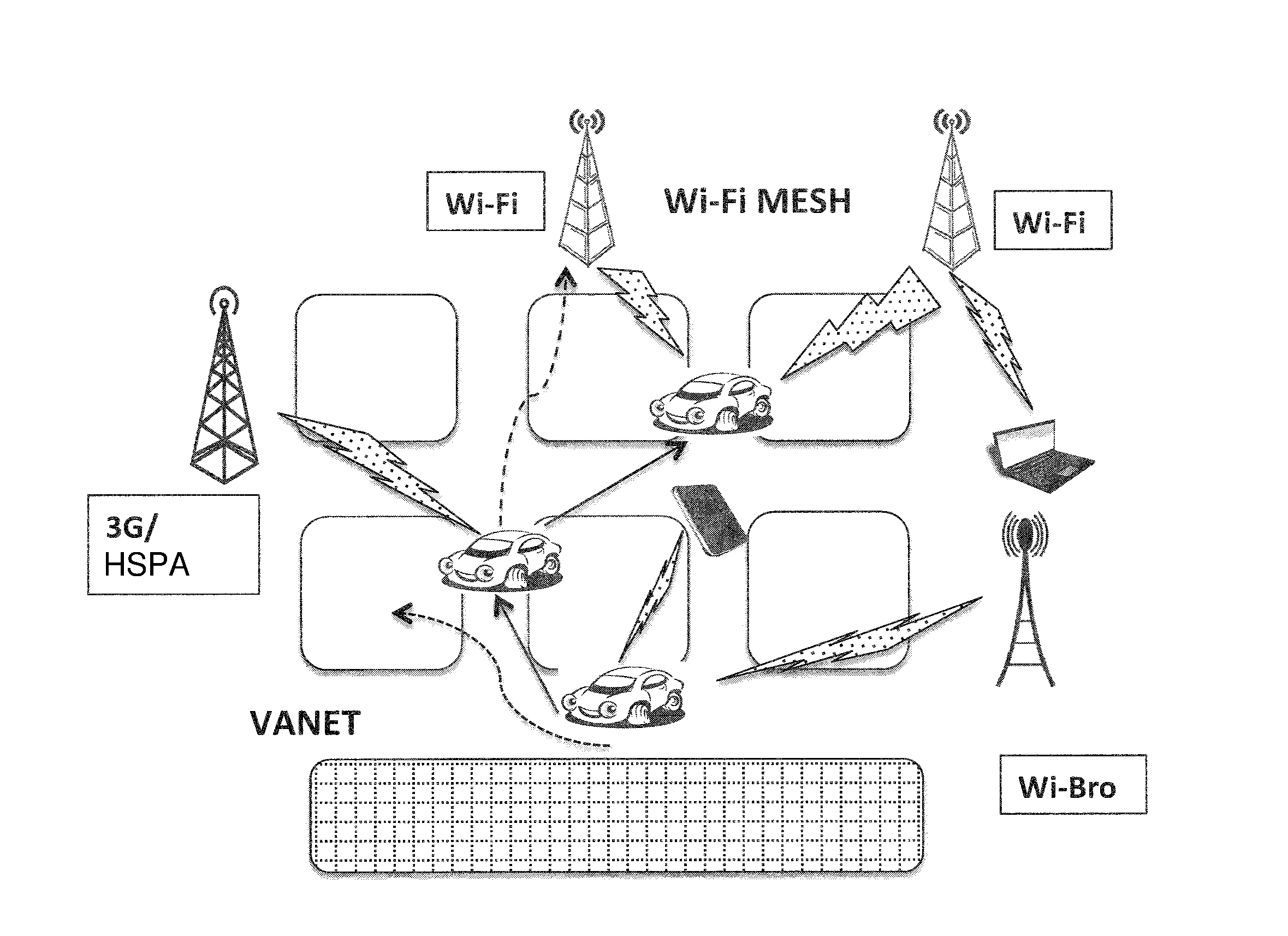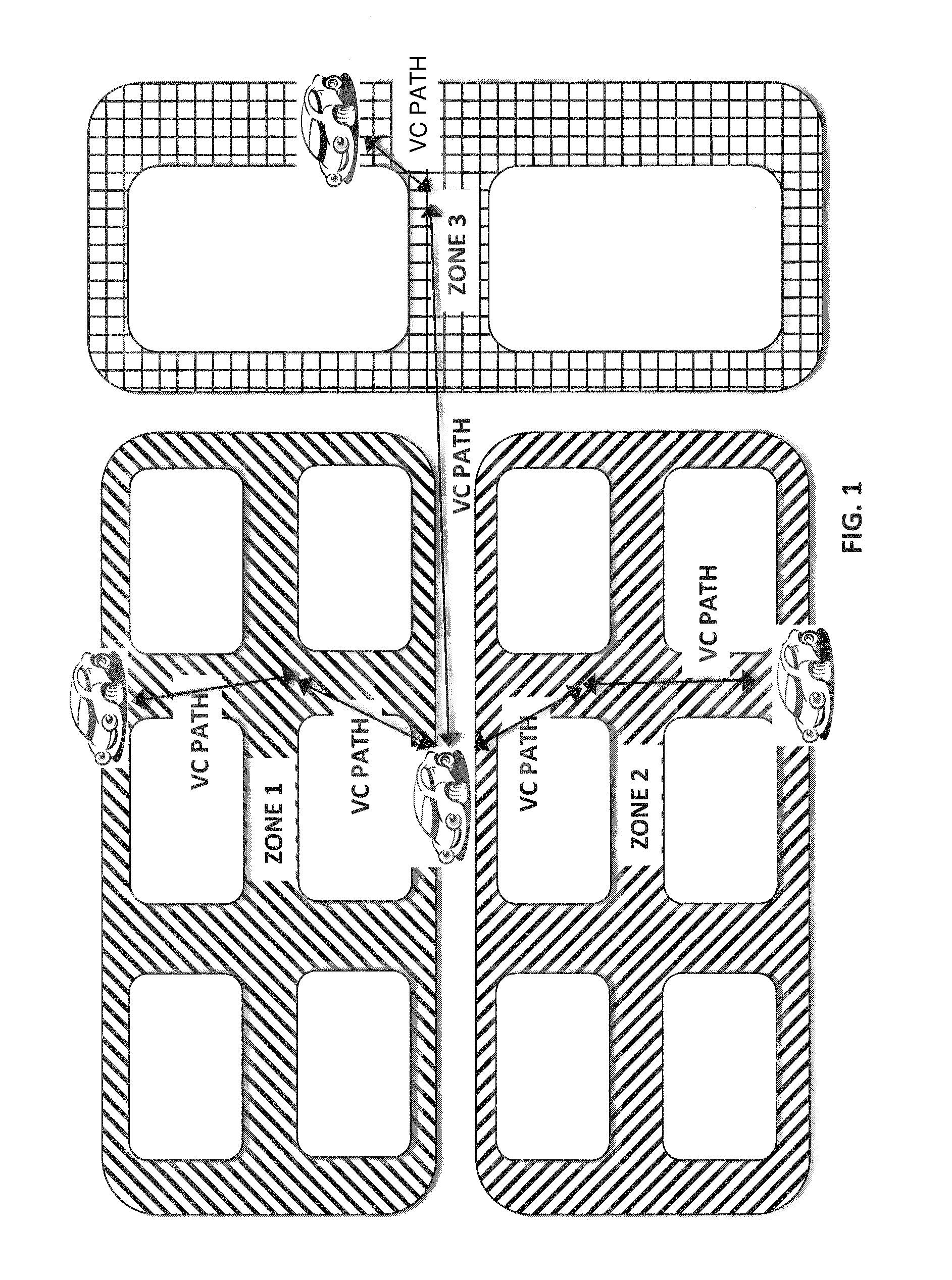Peer to peer vehicle ad hoc network with bandwidth bonding, seamless mobility and flow-based routing
a peer-to-peer vehicle ad hoc network and vehicle ad hoc technology, applied in data switching networks, frequency-division multiplexes, instruments, etc., can solve the problems of excessive number of hops needed between two communicating end points, pure vanet is its performance, and pure vanet can be disconnected. , to achieve the effect of reducing the delay of per-hop
- Summary
- Abstract
- Description
- Claims
- Application Information
AI Technical Summary
Benefits of technology
Problems solved by technology
Method used
Image
Examples
Embodiment Construction
[0094]I. Pure VANET
[0095]The present invention solves three problems of a pure VANET: long per-hop delay, large number of hops in a round trip, control and management without centralized infrastructure. The key concept is virtual circuit (VC) routing and distributed DHT-based algorithm.
[0096]In the rest of this section, a VANET node will be used interchangeably with a VANET vehicle. To simplify the description, a VANET node will also be referred to as a node.
[0097]Definition of Virtual Circuit
[0098]There is a fundamental difference between a virtual circuit in a fixed network and a virtual circuit in a pure VANET. In the classical ATM (asynchronous transfer mode) technology, a virtual circuit (VC) is a fixed path between a source and a destination node. This path is fixed and is never changed starting at the time of set up until the time of tear down. Further, a VC is tied to its source and destination end points. Thus, a VC is identified by both the path and the two end points. In ...
PUM
 Login to View More
Login to View More Abstract
Description
Claims
Application Information
 Login to View More
Login to View More - R&D
- Intellectual Property
- Life Sciences
- Materials
- Tech Scout
- Unparalleled Data Quality
- Higher Quality Content
- 60% Fewer Hallucinations
Browse by: Latest US Patents, China's latest patents, Technical Efficacy Thesaurus, Application Domain, Technology Topic, Popular Technical Reports.
© 2025 PatSnap. All rights reserved.Legal|Privacy policy|Modern Slavery Act Transparency Statement|Sitemap|About US| Contact US: help@patsnap.com



